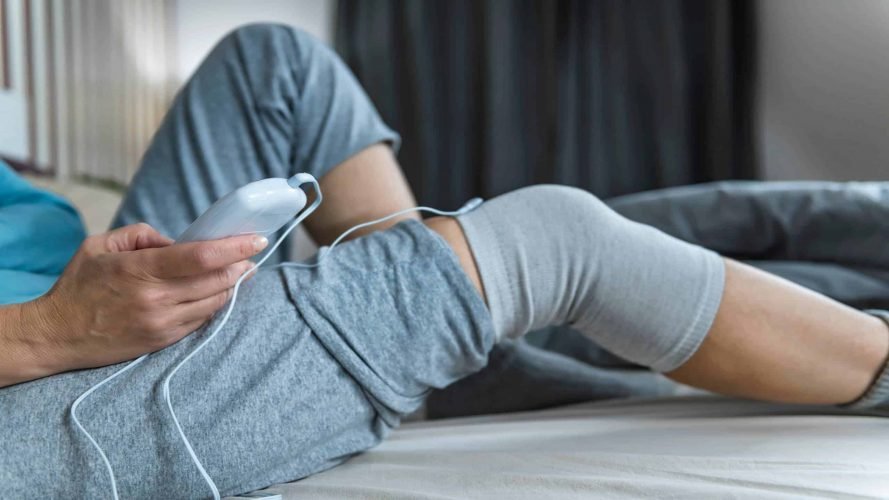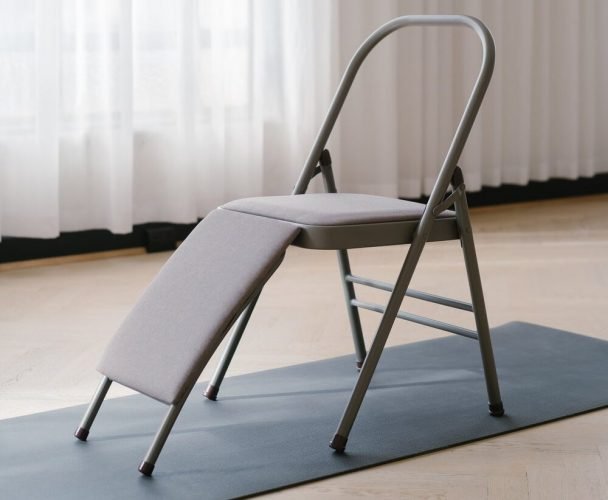The bottom Line
For those that enjoy inversion therapy as a means of alleviating chronic back pain, gravity boots should be on your list of considerations. Strengthen your core, legs, and back with the Teeter EZ-Up Gravity Boots. Teeter decompression devices are FDA Registered and designed to help alleviate and treat back pain, muscle tension, sciatica, and herniated discs.

At a Glance
Weight Limit: 250 lbs
Item Weight: 2 lbs per boot
Dimensions: 6.6″ x 13″ x 9″
FDA Approved: Yes
Adapter Kits: Yes
Material: Alloy & DuPont Hytrell
We put our bodies through a lot, from intensive workouts to long hours behind a computer screen. This constant pressure builds up over time and causes pain, discomfort, and poor posture, leading to chronic back pain and other spinal conditions.
To help relieve all of the above afflictions, the Teeter EZ-Up gravity boots give “hanging out” a new meaning. Gravity boots are a functional fitness accessory that allows you to invert your body by hanging upside down, performing inversion workouts and, relieving spinal pressure.
Inversion therapy with the Teeter EZ-UP gravity boots relieves back pain might sound bizarre, but physiotherapists often recommend it. Decompression helps rejuvenate discs, relieve pressure on nerves, realign your spine and ease muscle tension.
About The Teeter Brand
The best business people are those who are personally invested in their brand. Roger Teeter has turned his struggles with back pain into a passion-filled mission to provide life-changing solutions for millions of others who can relate to his battle or who just want to give themselves a good stretch. After years of looking for a solution to his constant back pain, he finally discovered that inversion was what he needed on his road to recovery.
In 1981, Teeter was born, and along with it, a range of quality inversion fitness products to help relieve spinal discomfort and redesign your life. Built for maximum benefit, Teeter has produced some of the best inversion tables, ensuring uncompromised quality in every component of their functional fitness and recovery solutions.
Features and Functions of The Teeter EZ-Up Gravity Boots
Using gravity boots relies on you using your body weight and the downward pull of gravity to elongate and relax tense muscles while decompressing your spine and weight-bearing joints.
After about two weeks, I noticed increased flexibility in my core, hips, and back.
Take care to use a pull-up bar at a suitable height to avoid your head touching the floor. When strapping on your boots, make sure that they are tight enough to be secure but not too snug that they cut off your circulation.
The hooks and calf loops of the Teeter EZ-Up Gravity Boots are made from a 40% blend of glass and nylon alloy. This combination provides unmatched strength and durability, and you’ll immediately notice that it feels solid and high-quality.
The boots are lined with 5/8 inch foam liners that offer superior comfort and minimal pressure on my ankles. The dual, self-locking buckles comfortably secure the boots around my ankle and lower calf, while the calf loops helped reduce the weight on my knee joints and the tops of my feet by creating a gentle bend of the knee.
The flexible shell is made from a tough but pliable DuPont Hytrel, a thermoplastic elastomer that combines the flexibility of rubber with the strength of thermoplastics. It is heat and chemical resistant and can flex in multiple directions even after regularly wearing the boots.
This recyclable material is also used for consumer electronics, seals and gaskets, specialty films, garments, and furniture. After consistent use, the padded lining, buckles, and latches haven’t shown any signs of distress or breakage.
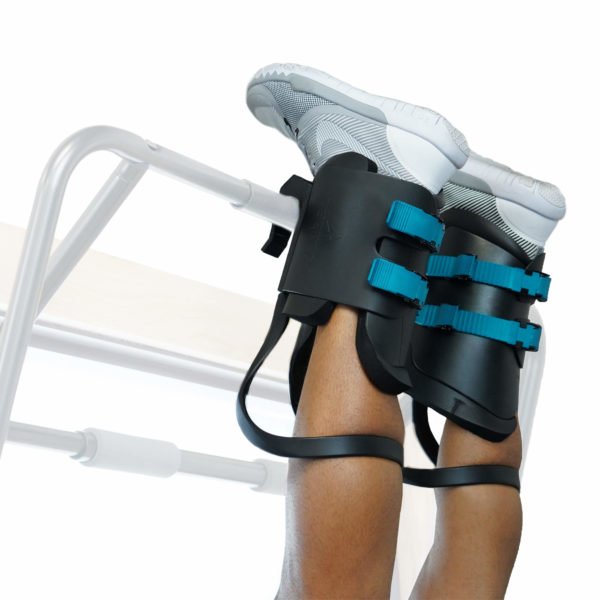
What I Liked About The eZ-Up gravity boots
It has the FDA stamp of approval! Teeter is currently the only FDA-approved inversion therapy brand – and all their devices are FDA registered. They’ve had their classification for decades and have since updated their list of targeted back conditions.
These include conditions such as:
- Back pain
- Sciatica
- Muscle tension
- Degenerative disc disease
- Herniated discs
- Spinal stenosis
- Spinal curvature due to tight muscles
- Muscle spasm
- Facet syndrome
As far as sizing goes, the Teeter EZ-Up gravity boots are designed to fit most leg and ankle sizes, but they do have an XL gravity boot available with a 1-inch larger diameter and increased 1.5-inch height.
Unfortunately, calf loops are not included with the XL size. The micro-adjust allows you to find the most comfortable fit for those with a narrower calf or a bit of an instep.
While dangling by my bootstraps, I felt relief in my spine and engagement in my abs. To improve core strength and contribute to better body alignment, I tried working in some curls for good measure.
Add variety to your workouts by pairing it with other Teeter products, such as the EZ-Up Inversion Rack, Inversion Bar, F5000, or F7000 inversion tables, each sold separately. If you feel comfortable and adventurous, you can also hold a small weight while inverted.
What i disliked about EZ-Up gravity boots
As helpful as this product is for back pain relief, you will need a relative degree of upper body strength to hoist yourself up on the pull-up bar. This might prove a little difficult for some. It’s best to have someone close by to keep an eye on you while you’re hanging, and that will be able to help you get back down safely again. This is a bit tricky, especially if you’re new to gravity boots.
You may start to lose feeling in your feet from hanging upside down for more than a couple of minutes. I would have preferred a more even weight distribution to the front part of my feet instead of only by my ankles. As far as comfort goes, the Teeter design has remained mostly unchanged for 20-odd years, but I found that the best way to increase comfort is by wearing lace-up shoes.
Hanging upside down for too long might be harmful to those who suffer from health conditions such as high blood pressure or glaucoma, so you should consult your doctor before purchasing them.
Comparing the teeter EZ-Up gravity boots to the zooTek anti-Gravity boots
The Teeter EZ-Up is without a doubt a top choice when it comes to anti-gravity boots, but I wanted to compare it to another close competitor to see how they stack up against each other.
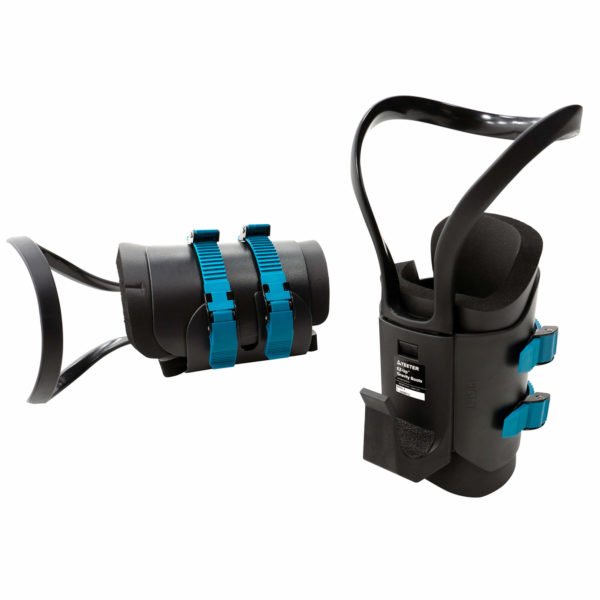
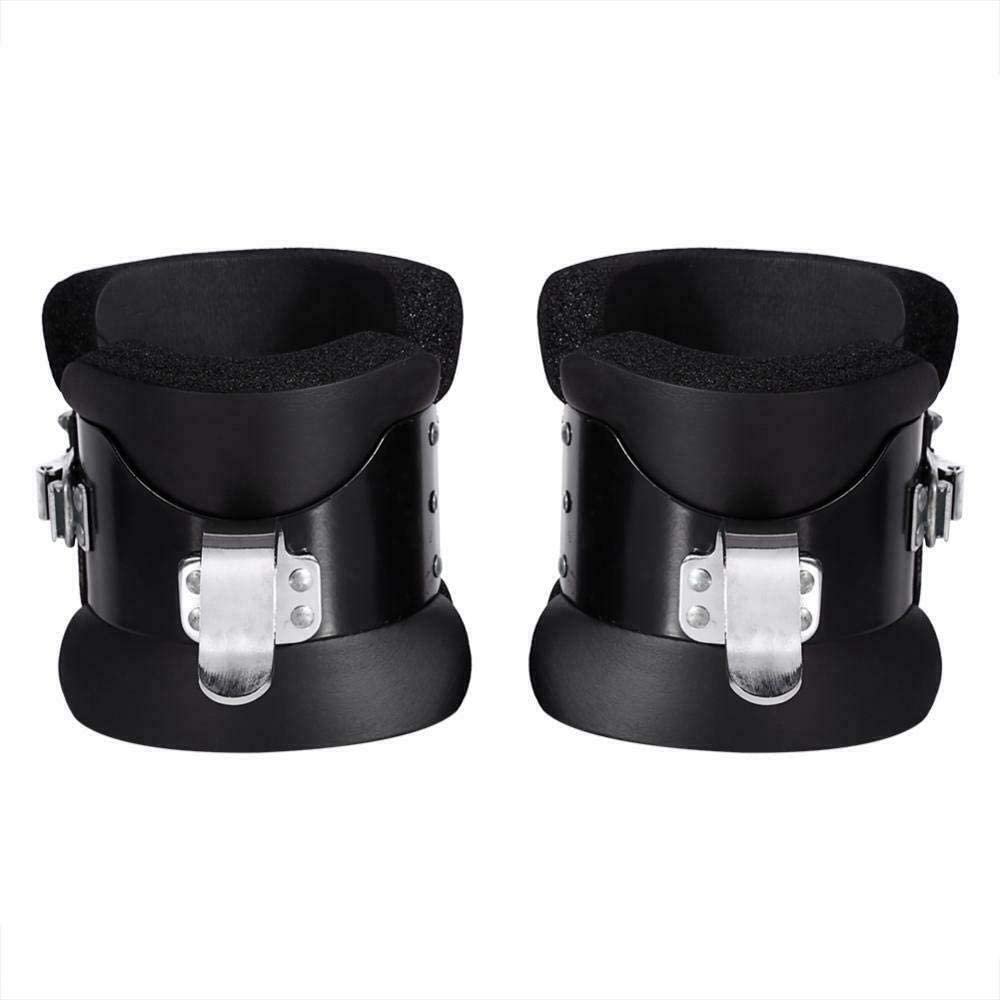
| Teeter EZ-Up Gravity Boots | ZooTek Anti-Gravity Boots |
|---|---|
| Hang Time: 2-4 minutes before resting. | Hang Time: 30 seconds to 2 minutes before resting |
| Max Weight: 250 lbs. | Max Weight: 265 lbs |
| Material: 40% Glass/Nylon, DuPont Hytrel, and foam padding. | Material: Foam padding, with steel buckle and hook only. |
| Sizing: One size fits (almost) all, with additional XL size available. Calf straps fit up to 16 inches. | Sizing: Thinner legs need to wear boots with or use extra padding for a secure fit. Free 2-meter high-intensity band for assistance. |
What’s in the box?
You will receive the Teeter EZ-Up Gravity Boots, a user guide, and an instructional DVD that will teach you how to do a variety of spinal, core, posture, and stretching exercises.
Should you get the teeter EZ-up gravity boots?
The Teeter EZ-Up gravity boots are worth investing in if you’re looking for alternative ways to treat and relieve acute and chronic back pain conditions. It is a trusted form of inversion therapy. I will say that these gravity boots aren’t for everyone, but it is worth trying out.
Compared to a close competitor, the ZooTek Anti Gravity Inversion Hang Up Boots, Teeter came out on top because it is secure, durable, and relatively comfortable. The fact that it is FDA approved to treat a wide range of back conditions and compatible with other Teeter products that bear the same FDA certification makes me trust this product’s quality even more.
I’d say that these gravity boots are a good consideration for those who feel strongly about holistic health and wellbeing. It certainly provides spinal pressure relief, but if hanging upside down by your ankles isn’t something you’re comfortable with, then this type of inversion therapy probably isn’t for you.
